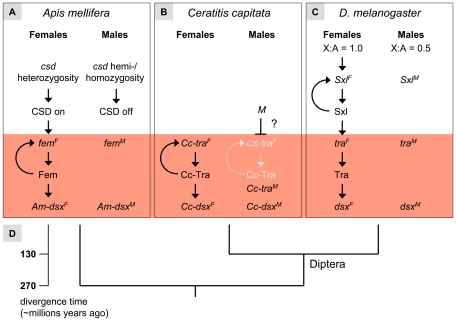Figure 7. The regulative hierarchy of honeybee sex determination in relation to other insect model species.
(A) Model for the honeybee sex determination pathway that controls both soma and germ cells. The heterozygous or homo-/hemizygous state of the csd gene determines whether Csd protein is active. Active Csd proteins, derived from different csd alleles in females, are splicing factors that direct the processing into female fem mRNAs. Female fem mRNAs (femF) are producing active Fem proteins that are required to mediate the splicing of Am-dsx pre-mRNA into the female mRNAs. The Fem protein has an additional positive feedback activity that directs the processing of femF mRNAs. Inactive CSD proteins, when derived from homo- or hemizygous csd alleles, result in a splicing of the fem and dsx transcripts, which is the default male state (femM, Am-dsxM). (B) Model for the sex determination pathway in Ceratitis capitata [37],[38]. The presence or absence of an unidentified factor M determines sex. In the absence of M the maternal provided Cc-tra gene product establishes an autoregulative loop in which Cc-Tra protein mediates the production of female Cc-tra mRNA. The Cc-Tra protein directs the splicing of Cc-dsx pre-mRNA into the female mode. The presence of M impairs the positive autoregulative loop of the Cc-tra gene products producing a default splicing pattern of Cc-tra transcripts, the male pre-mRNA. The male Cc-dsx mRNA is produced by default. (C) Simplified view of the somatic sex determination hierarchy in D. melanogaster [22]. The X∶A ratio determines whether Sxl is activated. Sxl protein in females is a splicing factor that directs the splicing of tra pre-mRNA into the female mode, resulting in the production of active Tra protein in females. Tra protein mediates the processing of female dsx mRNAs. In the absence of Sxl protein all these regulatory decisions do not occur and the male dsxM is produced by default. The male and female dsx transcripts encode sex-specific transcription factors that have several target genes and are involved in various aspects of sexual differentiation. (D) The evolutionary relationship of the species used in the comparison with their approximate time scale of divergence.

